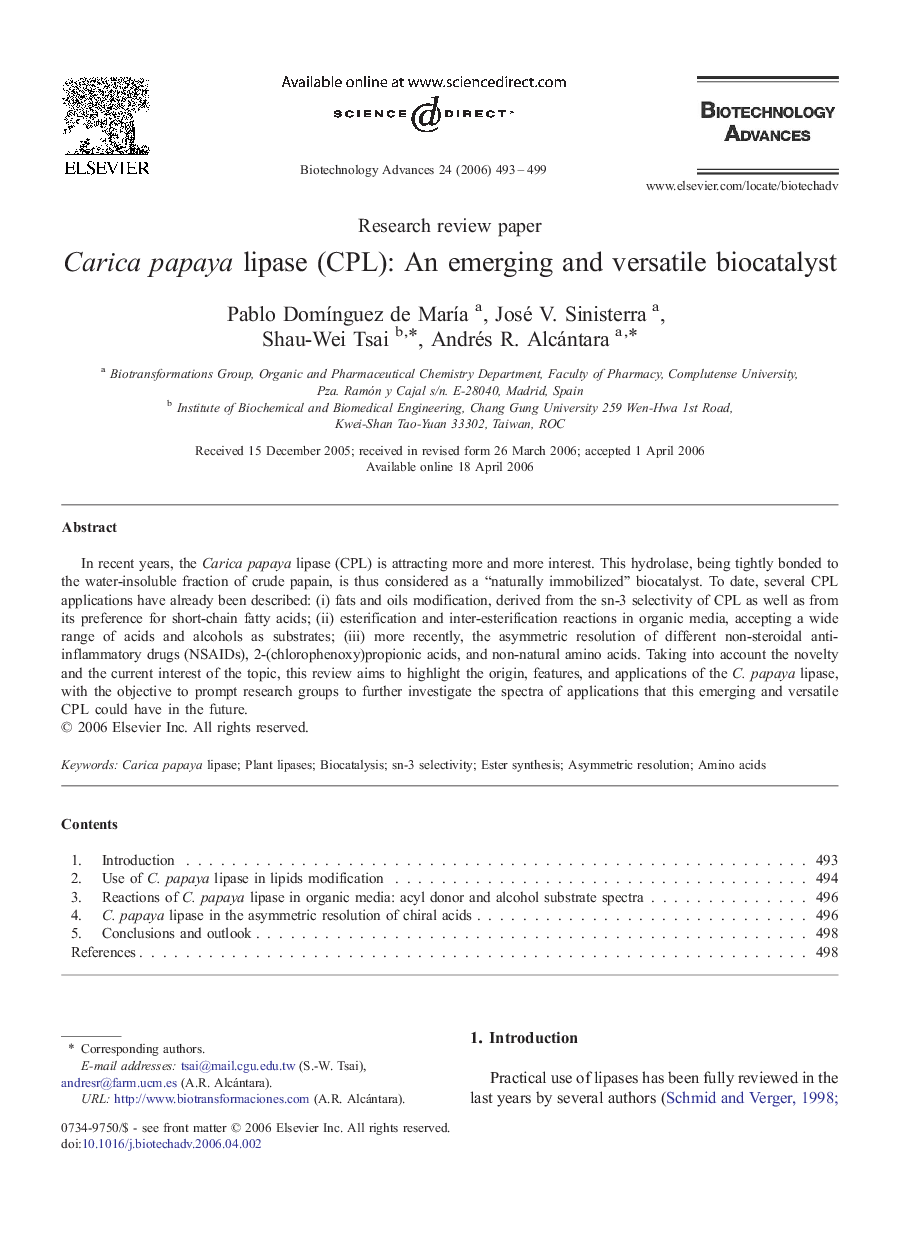| Article ID | Journal | Published Year | Pages | File Type |
|---|---|---|---|---|
| 14826 | Biotechnology Advances | 2006 | 7 Pages |
In recent years, the Carica papaya lipase (CPL) is attracting more and more interest. This hydrolase, being tightly bonded to the water-insoluble fraction of crude papain, is thus considered as a “naturally immobilized” biocatalyst. To date, several CPL applications have already been described: (i) fats and oils modification, derived from the sn-3 selectivity of CPL as well as from its preference for short-chain fatty acids; (ii) esterification and inter-esterification reactions in organic media, accepting a wide range of acids and alcohols as substrates; (iii) more recently, the asymmetric resolution of different non-steroidal anti-inflammatory drugs (NSAIDs), 2-(chlorophenoxy)propionic acids, and non-natural amino acids. Taking into account the novelty and the current interest of the topic, this review aims to highlight the origin, features, and applications of the C. papaya lipase, with the objective to prompt research groups to further investigate the spectra of applications that this emerging and versatile CPL could have in the future.
